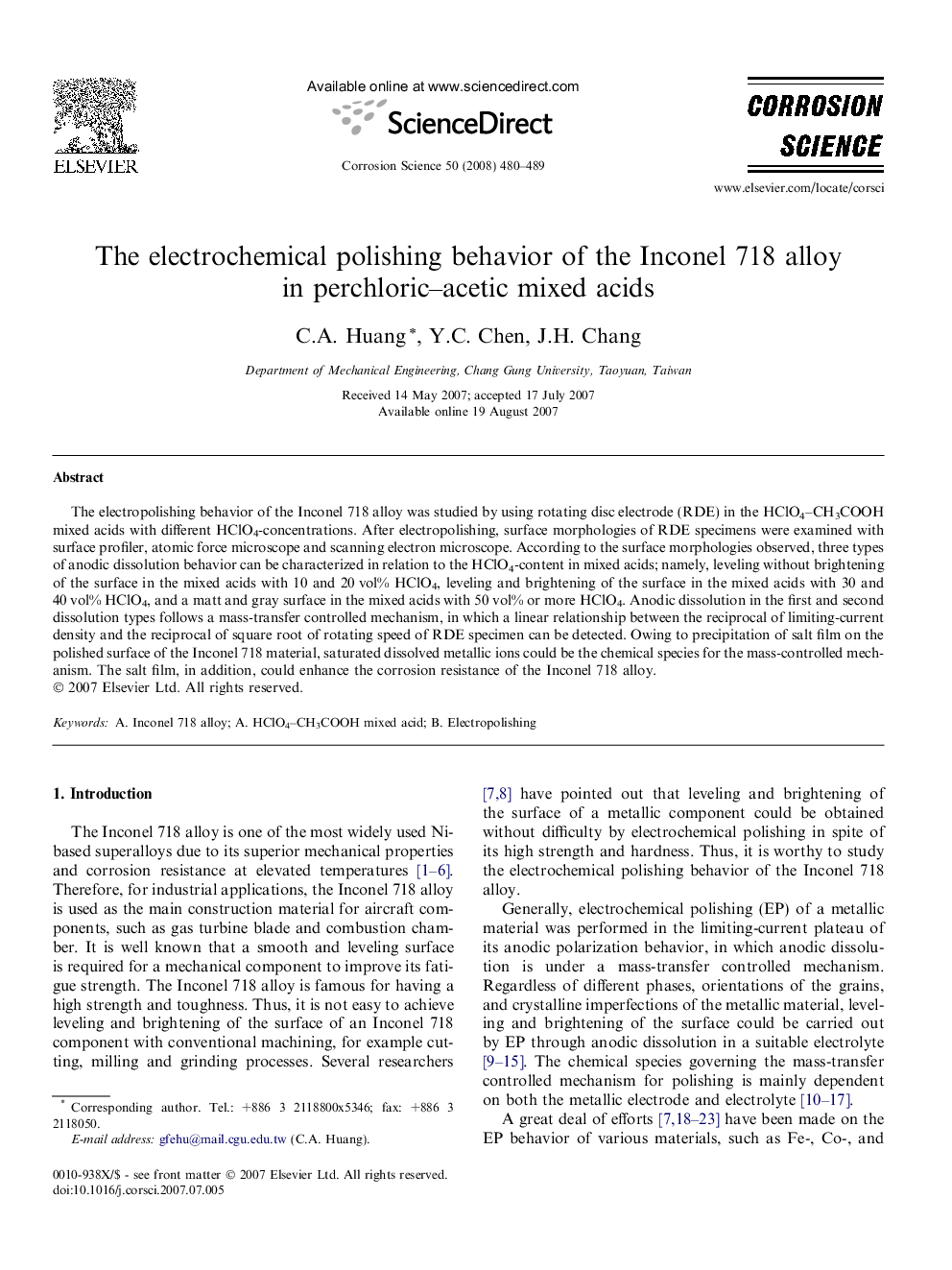| Article ID | Journal | Published Year | Pages | File Type |
|---|---|---|---|---|
| 1471619 | Corrosion Science | 2008 | 10 Pages |
The electropolishing behavior of the Inconel 718 alloy was studied by using rotating disc electrode (RDE) in the HClO4–CH3COOH mixed acids with different HClO4-concentrations. After electropolishing, surface morphologies of RDE specimens were examined with surface profiler, atomic force microscope and scanning electron microscope. According to the surface morphologies observed, three types of anodic dissolution behavior can be characterized in relation to the HClO4-content in mixed acids; namely, leveling without brightening of the surface in the mixed acids with 10 and 20 vol% HClO4, leveling and brightening of the surface in the mixed acids with 30 and 40 vol% HClO4, and a matt and gray surface in the mixed acids with 50 vol% or more HClO4. Anodic dissolution in the first and second dissolution types follows a mass-transfer controlled mechanism, in which a linear relationship between the reciprocal of limiting-current density and the reciprocal of square root of rotating speed of RDE specimen can be detected. Owing to precipitation of salt film on the polished surface of the Inconel 718 material, saturated dissolved metallic ions could be the chemical species for the mass-controlled mechanism. The salt film, in addition, could enhance the corrosion resistance of the Inconel 718 alloy.
